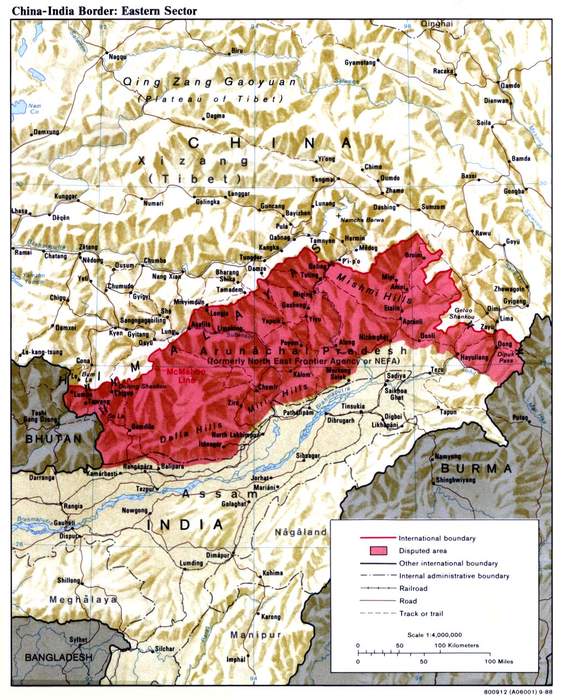McMahon Line
Boundary between the Tibetan region of China and India
McMahon Line ▸ Facts ▸ Comments ▸ News ▸ Videos

The McMahon Line is the boundary between Tibet and British India as agreed in the maps and notes exchanged by the respective plenipotentiaries on 24–25 March 1914 at Delhi, as part of the 1914 Simla Convention.
The line delimited the respective spheres of influence of the two countries in the eastern Himalayan region along northeast India and northern Burma (Myanmar), which were earlier undefined.
The Republic of China was not a party to the McMahon Line agreement,
but the line was part of the overall boundary of Tibet defined in the Simla Convention, initialled by all three parties and later repudiated by the government of China.
The Indian part of the Line currently serves as the de facto boundary between China and India, although its legal status is disputed by the People's Republic of China. The Burmese part of the Line was renegotiated by the People's Republic of China and Myanmar.
| 0 shares | ShareTweetSavePostSend |
You Might Like
US Senate committee passes resolution recognising Arunachal Pradesh as integral part of IndiaThe US Congressional Senatorial Committee passed a resolution affirming that Arunachal Pradesh is an integral part of India and recognises the McMahon Line as the boundary between China and India. The..IndiaTimes - Published | |
US recognises McMahon Line as international boundary between China and Arunachal Pradesh: ResolutionIndiaTimes - Published |
| Search this site and the web: |
